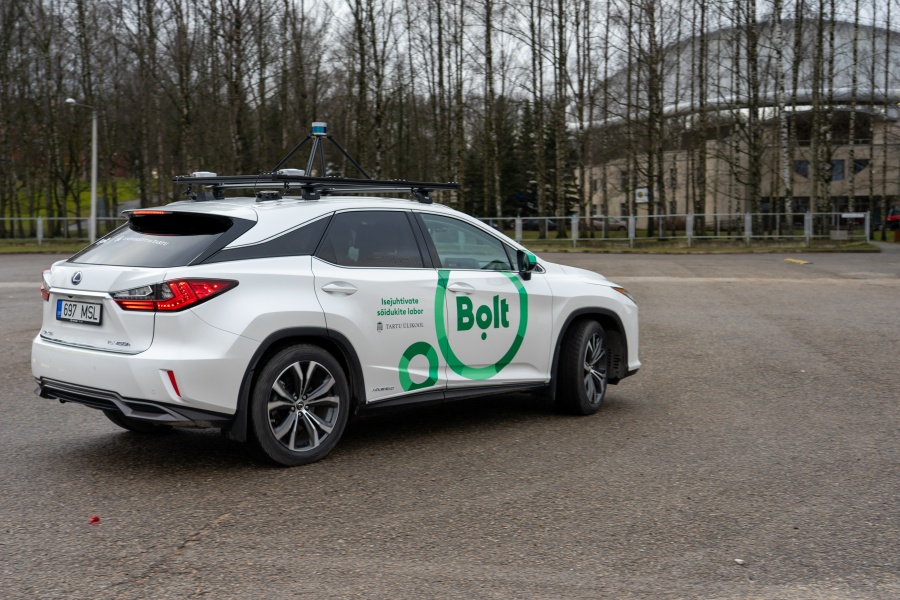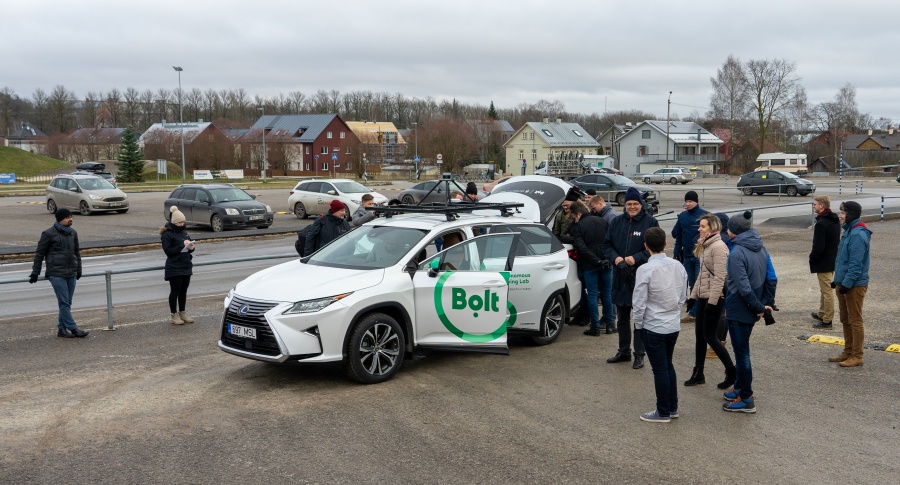University of Tartu and Bolt presented autonomous driving lab’s test car
On the end of January the University of Tartu and Bolt presented the test car procured for the University of Tartu’s autonomous driving lab. This high-technology vehicle will be used for experiments in several research and development fields. The aim is to conduct test runs in urban traffic this year already.
According to Anne Jääger, Head of Industry Collaboration and Project Manager at the Institute of Computer Science of the University of Tartu, the presented test car is essentially a technology development platform. It will be used to start research and development in several research projects related to autonomous driving. “Among other things, we will study the possibilities to automatically generate machine-readable precision maps that are necessary for autonomous driving, ensure user safety and systems security, and improve human-vehicle interactions,” Jääger said.
“Rather than developing its own self-driving car, the University of Tartu aims for experimental research and development with the help of freeware technologies and mapping applications. We want to analyse the suitability of technological solutions that have been developed in the world for use on self-driving cars in Estonia, and work out new technology on that basis,” Jääger explained. In addition to research and development it is also important to educate future specialists. “This is why we are soon offering first courses on autonomous driving technologies, and involve students in the work of the lab,” Jääger added.

The vehicle introduced today is equipped with many devices, for example a laser locator, camera, radar and navigation system, which help the car drive autonomously in the future. Currently it can independently travel a predetermined distance and is controlled by software. The next step, after developing the technology, would be autonomous test runs in traffic. Before that, all functions are thoroughly tested in computer simulation and thereafter in a parking area. During the test runs there are always two people in the car to ensure safety: a safety driver behind the wheel and a researcher in the passenger seat.
The laboratory was established by the university and Bolt; and also other enterprises operating in the field of self-driving technology are expected to join. Cooperation is also planned with the city of Tartu and the Estonian Road Administration to adapt legal requirements to the rapidly evolving technology.
André Karpištšenko, Head of Data Science at Bolt, says the goal of their cooperation with the University of Tartu is to prepare for the launch of the new technology and in future also use self-driving cars in Bolt services. “Bolt has successfully applied the existing technology. However, excellent knowledge is required for success, and the University of Tartu has got it. The university also has experience in developing innovative projects. The research and development in the lab help us work out the best solutions for the future markets,” he said.
“In future, the self-driving car will be a sustainable alternative, considering the ever-growing demand for transport. Transport in the city, in suburbs and in the country will definitely change in different ways. However, with technology developed in cooperation by the University of Tartu, Bolt, Archimedes and other organisations, also the legal space and infrastructure must develop so people will have the opportunity to use innovative modes of mobility,” Karpištšenko added.
Bolt received a grant from the Archimedes measure “Support for applied research in smart specialisation growth areas” to cooperate with the University of Tartu in applied research in autonomous driving technologies from May 2019 to August 2021.
Source: University of Tartu
Photos: Henry Narits
